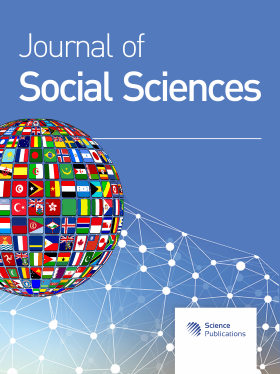Use of Indigenous Knowledge for Conservation and Development of Fishing Career at the Lampao Dam in Northeast
Abstract
Problem statement: The problem of examining this title was caused by building the Lampao Dam. It was the important cause which threatened the ecosystem. Biological diversities and the quantity of water animals decreased, impacting the way of life of fishermen at Ban Sa-at Na Thom, who had to face poverty and had to struggle hard. This was because the resources in water sources were snatched for uses by villagers. The study purposes were to examine the background of building the Lampao Dam and the use of indigenous knowledge for conservation and development of the fishermen's career. Approach: The case study area was Ban Sa-at Na Thom, Tambon Lamkhlong, Amphoe Muang, Changwat Kalasin. The study procedure was the qualitative research methodology. Data were collected from related literature and field data were collected using structured- and unstructured-interview forms and focused group discussion from 32 informants. The study finding were presented by means of a descriptive analysis. Results: The findings revealed that, for the background of building the Lampao Dam, the construction began in 1963 and completed in 1968. The construction purposes were for flood relief, for agriculture and for recreation. The use of indigenous knowledge relied on the traditional concept by believing in the powers of Phi Pu Ta Phon Phraison (the spirits of villagers' ancestors who guard the forest).They used the belief as the rule to control fishermen not to catch fish in the forbidden area of forgiveness of Chao Pu spirit called "forgiveness water area" of the ancestors' spirit. They used indigenous knowledge of new concept for conservation of fish breeds. This was generated from cooperation in building homes for fish to live in, called "hoe pla" making. Development of fishing career was generated from the use of indigenous knowledge of the new concept of performing activities on the national fishery day. They performed the ritual of life lengthening and activities for the short-term fishing career from nurturing water animals together with the long-term fishing career from conservation tourism by fishing. Conclusion: The fishermen used indigenous knowledge for conserving fish resources using the traditional concept of believing in the powers of Phi Pu Ta and they used indigenous knowledge in the new concept of relying on the state sector and self-reliance and participation of everyone in retaining the fishing career in a short term and a long term. It could reflect building the dam and household economic development which could exist using self-reliant and market system-reliant economy.
DOI: https://doi.org/10.3844/jssp.2010.315.319

- 6,286 Views
- 3,962 Downloads
- 3 Citations
Download
Keywords
- Indigenous knowledge
- the use of indigenous knowledge for conservation of fishing career, development of the fishing caree
- the Lampao dam area
- northeast Thailand
